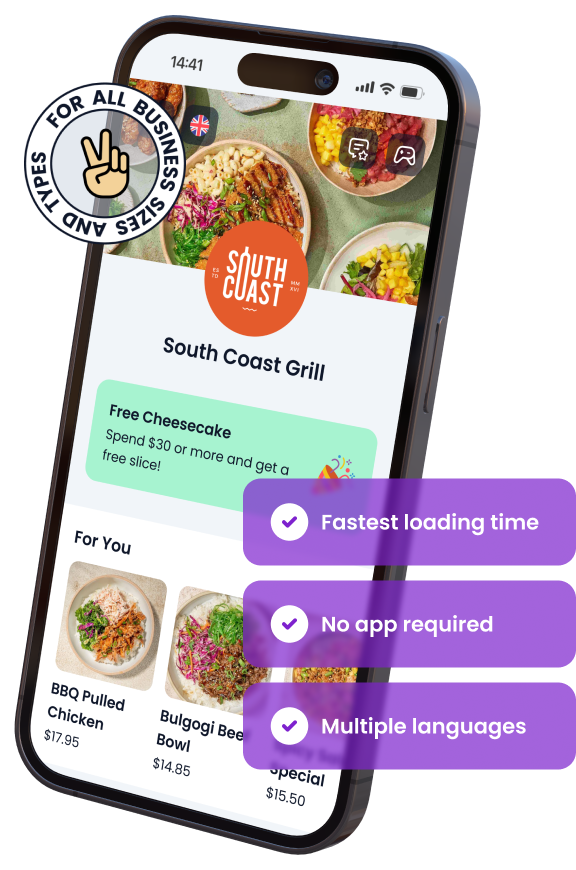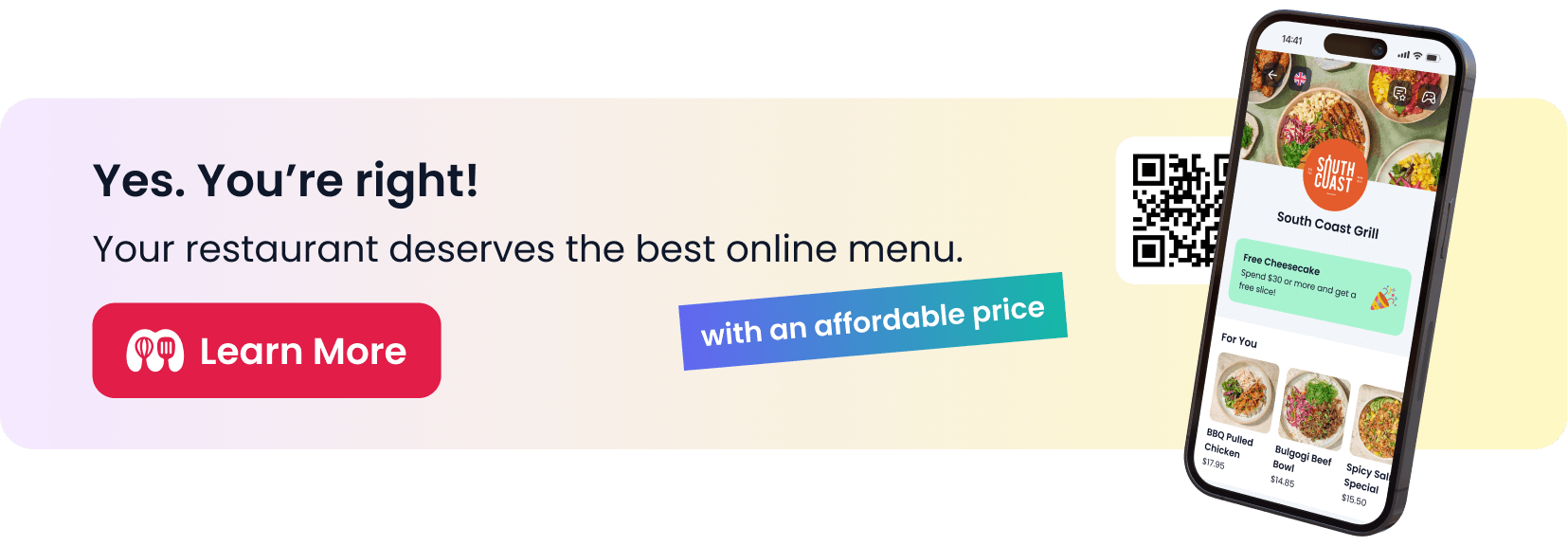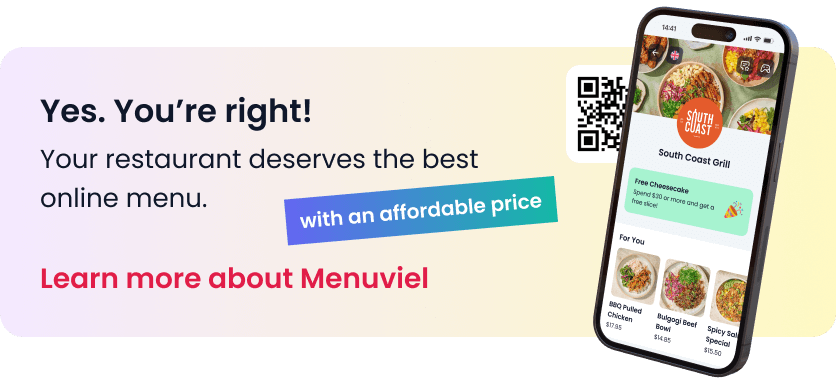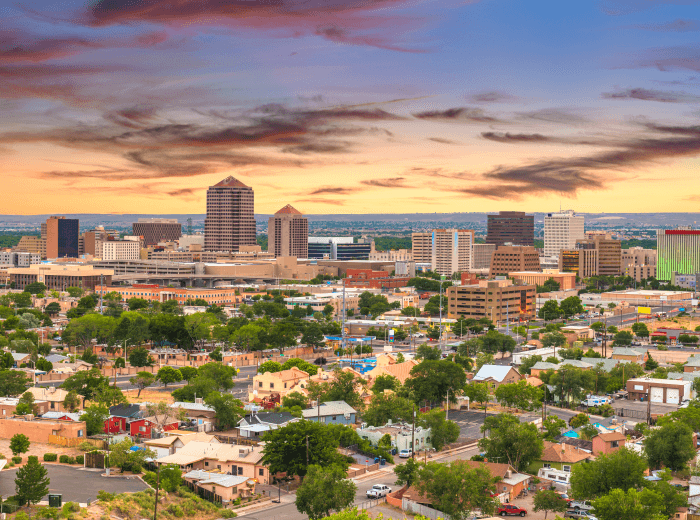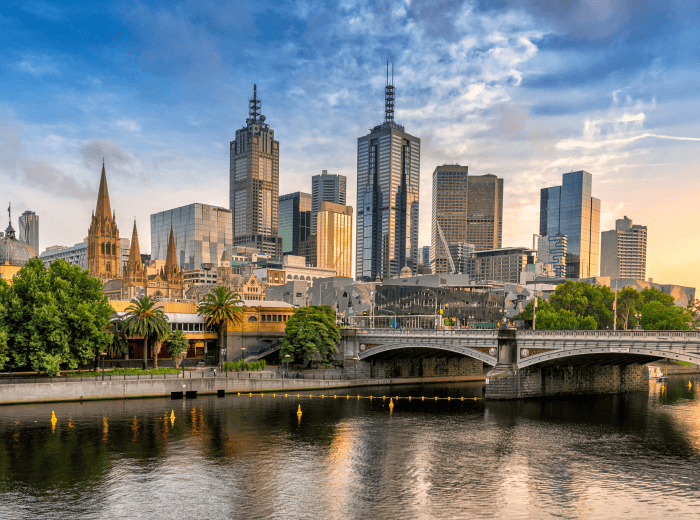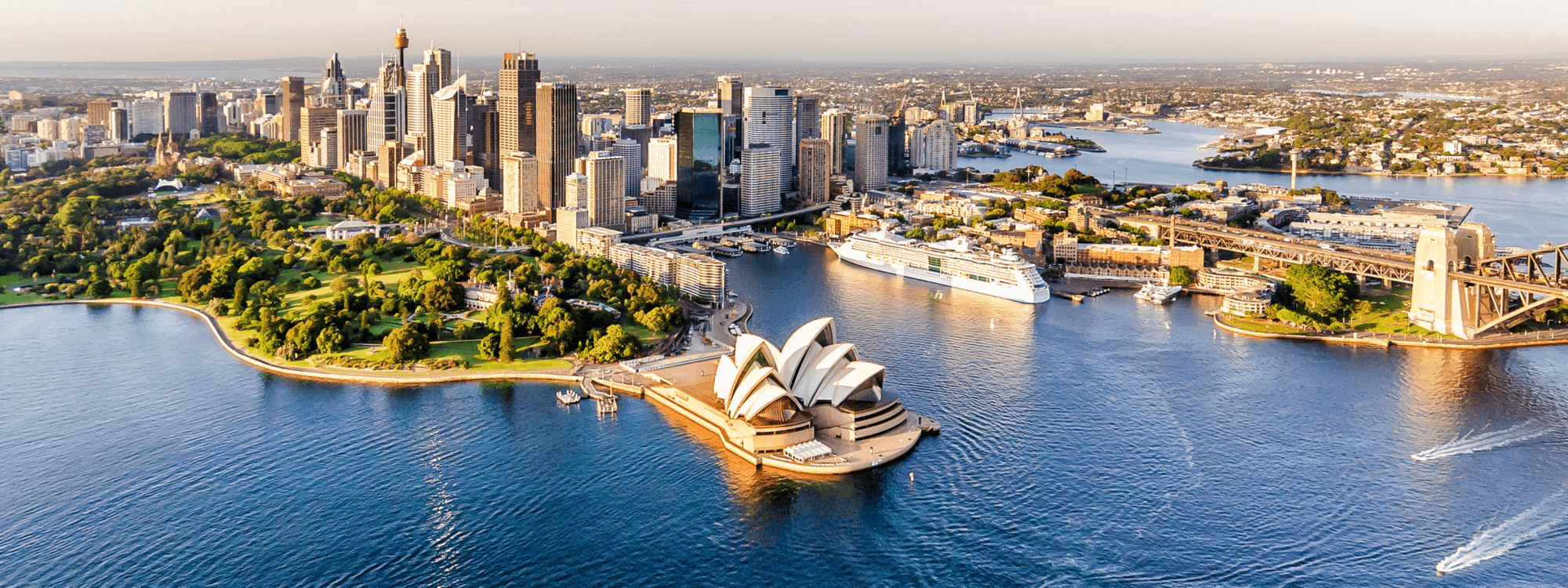
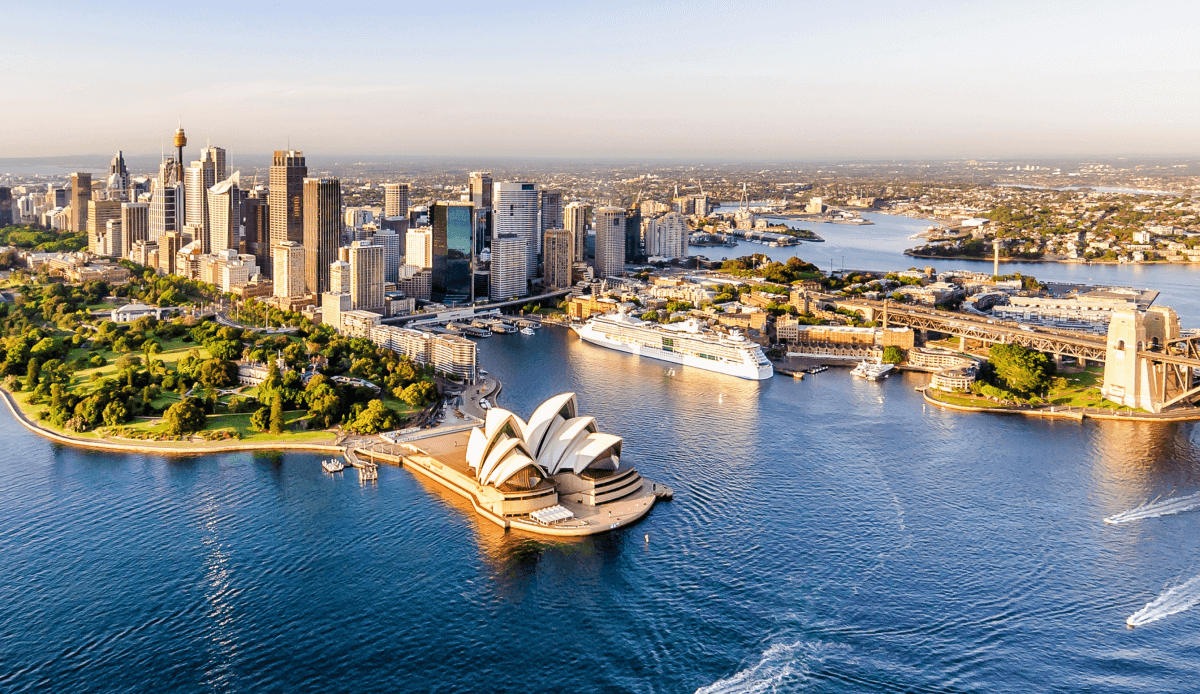
How Much Does It Cost to Open a Restaurant in Sydney in 2024?
Sydney is one of the most vibrant and competitive cities in Australia, with a booming food scene that attracts both locals and tourists. If you’re considering opening a restaurant here in 2024, you need to be well-prepared for the financial commitment involved. Understanding the costs is crucial for setting up a successful business, whether you’re planning to open a small café or a high-end fine dining restaurant.
From location and rent to staffing and food supplies, every detail requires careful budgeting. With Sydney’s high real estate prices, labor laws, and operational costs, getting a clear idea of the financial landscape will help you avoid surprises down the road. This guide will break down all the essential costs involved in opening a restaurant in Sydney, providing you with actionable insights to plan your budget and navigate the local market. Whether you’re a first-time restaurateur or expanding your business, understanding these expenses will be key to your success.
Let’s dive into the detailed cost breakdown so you can make informed financial decisions.
Understanding the Startup Costs for a Restaurant in Sydney
Starting a restaurant in Sydney involves several layers of expenses, and understanding these upfront will allow you to plan your budget more effectively. The initial outlay covers everything from location and kitchen equipment to licensing and staffing. Having a clear breakdown of startup costs will help you determine how much capital you’ll need before opening your doors. Let’s take a closer look at the key cost factors that contribute to your initial budget.
What Are Startup Costs?
Startup costs refer to all the initial expenses incurred before your restaurant begins operating. These costs often include:
- Lease or rent deposit: Securing a location requires an upfront deposit, usually 3-6 months’ rent.
- Renovation and fit-out costs: Adapting the space to fit your restaurant’s design and functional needs.
- Kitchen equipment and furniture: Commercial appliances, seating, tables, and decor.
- Licensing and permits: Local regulations require several licenses to operate legally.
- Staff recruitment and training: The cost of hiring and onboarding your team.
Key Cost Factors for New Restaurants
Several primary factors will dictate your overall startup costs, and being aware of these will help you avoid surprises:
- Location: Premium areas like Sydney’s CBD demand higher rent compared to suburban locations.
- Restaurant type: Fast food, casual dining, and fine dining restaurants each have different cost structures.
- Size of the restaurant: Larger spaces require more equipment, furniture, and staff.
- Cuisine type: Some cuisines require specialized equipment or ingredients, which can affect costs.
How Much Capital Do You Need for Different Restaurant Types?
Different types of restaurants have varied capital requirements. Here’s a brief comparison of how much you may need based on the restaurant type:
- Fast Food: $200,000 – $500,000
- Typically lower upfront costs, smaller spaces, and simpler equipment.
- Cafes and Small Eateries: $150,000 – $400,000
- Moderate fit-out and equipment costs with fewer staff requirements.
- Fine Dining: $500,000 – $1,500,000+
- Higher quality equipment, custom interior design, and a larger, more skilled staff increase costs.
By understanding these cost categories, you’ll be better equipped to make informed financial decisions when starting your restaurant in Sydney.
Location Costs in Sydney
Choosing the right location is one of the most critical decisions when opening a restaurant in Sydney. The cost of securing a space can significantly vary depending on the area, and understanding these differences will help you budget effectively. Whether you’re looking to open in the bustling Central Business District (CBD) or a quieter suburban area, location costs will have a major impact on your overall budget. Let’s explore the factors that influence location costs and how to choose the best fit for your restaurant.
Choosing the Right Location: Factors That Affect Rent
Several factors influence the rent prices for restaurants in Sydney, and selecting the right area can make or break your business. Here are the key considerations:
- Foot traffic: High-traffic areas, such as near shopping centers or popular tourist destinations, command higher rent.
- Proximity to competitors: Being close to other successful restaurants can drive foot traffic, but might also increase rent prices.
- Accessibility and parking: Locations with ample parking or public transport access are more attractive but tend to cost more.
- Demographics: The type of clientele in different neighborhoods can influence how much you’ll pay in rent.
How Much Does Rent Cost in Different Sydney Suburbs?
Rent prices in Sydney vary significantly depending on the area. Below is an estimated range of rent costs for different types of restaurant locations:
- Central Business District (CBD):
- Estimated rent: $2,500 – $4,500 per square meter annually.
- Ideal for fine dining or upscale restaurants, but rent here is among the highest in the city.
- Eastern Suburbs (e.g., Bondi, Paddington):
- Estimated rent: $1,500 – $3,000 per square meter annually.
- Popular for cafes and casual dining, with a mix of locals and tourists.
- Western Suburbs (e.g., Parramatta, Auburn):
- Estimated rent: $800 – $1,500 per square meter annually.
- More affordable with a growing food scene, offering a mix of casual eateries and family-owned restaurants.
- Northern Beaches:
- Estimated rent: $1,200 – $2,000 per square meter annually.
- Known for high-end dining, but with lower rent compared to the CBD.
Lease vs. Buy: What’s Best for Your Budget?
When securing a location, you’ll have to decide whether to lease or buy the space. Each option has its pros and cons:
- Leasing:
- Lower initial costs.
- Flexibility to move if the location doesn’t perform well.
- Ongoing rent payments, which could increase annually.
- Buying:
- Higher upfront costs.
- Potential for property value appreciation over time.
- Full control over renovations and changes.
Most new restaurant owners opt to lease due to the lower initial financial commitment, but buying may be a good option for those with substantial capital who are looking for long-term investment potential.
By understanding these location cost factors, you’ll be able to choose a location that aligns with your budget and business model.
Renovation and Fit-Out Costs
Renovating and fitting out your restaurant space in Sydney is often one of the most significant startup expenses. From transforming an empty shell into a fully functional and visually appealing dining area to ensuring the kitchen is equipped with commercial-grade appliances, these costs can add up quickly. Understanding how to budget for renovations and fit-out is key to making sure your restaurant opens on time and within budget.
Cost of Renovating a Commercial Space in Sydney
Renovating a commercial space to suit the unique needs of your restaurant can vary widely depending on the condition of the space and the complexity of the work required. Here are some key factors that influence renovation costs:
- Structural changes: Moving walls, electrical rewiring, and plumbing upgrades can significantly increase renovation costs.
- Flooring and ceiling installations: Depending on the style and materials, these can range from basic tile flooring to high-end finishes.
- Building approvals and compliance: You may need council approval for major renovations, adding to both time and cost.
On average, expect to spend between $1,500 to $3,000 per square meter for comprehensive renovations, depending on the level of customization and quality of materials.
How to Budget for Kitchen Equipment and Appliances
Equipping your restaurant with the necessary kitchen appliances is another major expense. A well-planned kitchen layout is essential for smooth operations, but commercial-grade equipment doesn’t come cheap. Some key expenses include:
- Commercial ovens, ranges, and stoves: $10,000 – $50,000 depending on the size and brand.
- Refrigerators and freezers: $5,000 – $15,000 for high-capacity models.
- Dishwashing equipment: $2,000 – $10,000.
- Specialized equipment: If your restaurant offers specialty cuisine (e.g., pizza ovens or sushi rolling machines), expect additional costs.
Overall, kitchen equipment can cost anywhere between $50,000 to $150,000 or more, depending on the size of your operation and the type of cuisine you serve.
Restaurant Interior Design Costs: Furniture, Decor, and Lighting
Creating a welcoming and visually appealing dining environment is crucial for attracting customers. The costs of restaurant interior design can vary based on your concept and aesthetic preferences. Here’s a breakdown of what to consider:
- Furniture: Tables, chairs, booths, and bar stools can range from budget-friendly options to custom pieces. Expect to spend $500 to $1,500 per table and $100 to $500 per chair, depending on the quality and design.
- Decor: Art, plants, and other decorative elements can help create the desired ambiance. Set aside $5,000 to $20,000 depending on the size and style of your restaurant.
- Lighting: Lighting plays a key role in setting the mood of your restaurant. Installing modern, energy-efficient lighting can cost anywhere from $2,000 to $10,000, depending on the complexity and design.
DIY vs. Hiring a Professional Designer
When planning your restaurant’s interior, you’ll need to decide whether to take the DIY approach or hire a professional designer:
- DIY:
- Lower costs but more time-intensive.
- Requires a good understanding of space planning and design trends.
- Hiring a Professional Designer:
- Higher upfront costs, but they can often negotiate better rates with contractors and suppliers.
- Ensures your restaurant’s design is functional and cohesive, and aligns with your concept.
- Expect to pay between $5,000 to $20,000 for professional design services, depending on the scale of the project.
By planning and budgeting for renovation and fit-out costs, you can create a space that is not only operational but also attractive to your target audience, ensuring a great first impression when you open your doors.
Licensing, Permits, and Legal Fees
Opening a restaurant in Sydney requires a range of licenses and permits to ensure you operate legally and comply with local regulations. Navigating the various legal requirements can be complex, but it’s an essential part of the process. Additionally, hiring legal experts to help with contracts and compliance adds to your startup costs. Let’s explore the permits you’ll need, how much they cost, and what legal fees to expect.
What Licenses Are Needed to Open a Restaurant in Sydney?
Before opening your doors, you’ll need to secure several important licenses and permits. These vary depending on your specific restaurant model but typically include:
- Food Safety License: This is a mandatory requirement for any business serving food. It ensures that your restaurant meets health and safety standards for food preparation and storage.
- Liquor License: If your restaurant plans to serve alcohol, you’ll need a liquor license. There are different types of liquor licenses depending on whether you serve alcohol with meals or operate as a bar.
- Council Permits: These include permits for outdoor seating, signage, and noise levels, depending on the specifics of your location.
- Business Registration: Your restaurant must be registered with the Australian Business Register (ABR) and you’ll need an Australian Business Number (ABN).
Each of these licenses is essential for ensuring that your restaurant can operate without legal challenges.
How Much Do Permits and Licenses Cost in 2024?
The cost of licenses and permits varies depending on your restaurant’s location, size, and whether you plan to serve alcohol. Here’s an estimate of the key costs:
- Food Safety License: $300 – $1,000, depending on the type and scale of the business.
- Liquor License: $600 – $3,500, based on the type of license (on-premises, BYO, or full license for bars).
- Council Permits: $200 – $2,000, depending on outdoor dining and signage permits.
- Business Registration: $37 for a 1-year registration, $87 for 3 years, or $506 for lifetime registration.
In total, you can expect to pay anywhere from $1,500 to $7,000 for permits and licenses, depending on your specific needs.
Legal Fees: What to Expect for Contracts and Advice
In addition to securing permits, it’s crucial to work with a legal expert who can help with contracts, leasing agreements, and ensuring compliance with local regulations. Some key legal expenses include:
- Lease agreements: Lawyers will review and negotiate your lease to ensure favorable terms. This can cost between $1,000 and $3,000.
- Employment contracts: Ensuring your staff contracts comply with the Fair Work Act is essential. Legal fees for drafting contracts can range from $500 to $2,000.
- Compliance with food safety regulations: Legal consultations for compliance issues can cost $200 to $500 per hour, depending on the complexity of the issue.
In total, legal fees can add $2,000 to $10,000 to your startup costs, depending on the level of assistance you require. While these costs may seem high, they are crucial to avoid potential legal pitfalls down the road.
By understanding and budgeting for licensing, permits, and legal fees, you ensure that your restaurant operates smoothly and avoids costly legal issues that could arise from non-compliance.
Staffing Costs and Labor Laws in Sydney
Staffing is one of the most significant ongoing costs for any restaurant, and Sydney is no exception. With Australia’s labor laws designed to protect workers, ensuring compliance while managing your staffing budget can be a challenging but necessary aspect of running a restaurant. Understanding the average wages, labor laws, and employee classifications will help you navigate staffing efficiently and legally.
Average Wages and Salaries for Restaurant Staff
In Sydney, wages for restaurant staff can vary depending on the role, level of experience, and the type of restaurant. Below are the average wages you can expect to pay your team:
- Chefs and kitchen staff:
- Head Chef: $65,000 – $90,000 per year
- Sous Chef: $55,000 – $75,000 per year
- Line Cook: $45,000 – $55,000 per year
- Kitchen Hand: $25 – $30 per hour
- Front of house staff:
- Restaurant Manager: $60,000 – $80,000 per year
- Waitstaff: $25 – $35 per hour
- Bartender: $25 – $35 per hour
- Barista: $23 – $30 per hour
- Casual staff:
- Most casual staff in restaurants, including waitstaff and kitchen assistants, are paid on an hourly basis, often starting at $23 – $35 per hour, depending on the time of day and the employee’s experience.
Staffing costs will depend on the size of your restaurant, the number of employees, and whether you opt for full-time, part-time, or casual workers.
Understanding the Fair Work Act and Compliance
The Fair Work Act governs employment conditions in Australia, and it is essential for restaurant owners to comply with these regulations. Failure to do so can result in significant penalties and legal issues. Here are some key areas of compliance:
- Minimum wage: You must pay employees at least the national minimum wage, which is updated annually. As of 2024, the national minimum wage is $23.23 per hour for full-time and part-time adult workers.
- Penalty rates: If your restaurant operates on weekends, public holidays, or during late hours, you will be required to pay higher rates known as penalty rates. These can increase the hourly wage by 25% to 50%, depending on the time and day.
- Employee entitlements: Full-time and part-time employees are entitled to certain benefits, including paid leave (annual, personal, and parental leave), superannuation (currently 11% of wages), and rest breaks during shifts.
- Casual workers: While casual workers are not entitled to paid leave, they receive an additional loading of 25% on top of their hourly rate to compensate for this lack of entitlements.
The Impact of Casual vs. Full-Time Employees on Your Budget
Choosing between casual and full-time employees can significantly impact your staffing budget:
- Casual Employees:
- Higher hourly rates due to casual loading (additional 25%), but you have flexibility in scheduling.
- No long-term commitment or need to provide leave entitlements.
- Ideal for peak periods, such as weekends or special events.
- Full-Time Employees:
- Lower hourly wage but come with entitlements such as paid leave and superannuation.
- Better suited for positions requiring consistency and skill, such as chefs and managers.
- You have a stable team, but you are obligated to pay for leave and other benefits, which can add to long-term costs.
When budgeting for staffing, you’ll need to account for all these factors, including compliance with labor laws, to avoid costly penalties and ensure that you maintain a productive and motivated workforce.
By understanding staffing costs and the associated labor laws, you can build a well-structured team that balances operational efficiency with compliance and cost-effectiveness.
Food and Beverage Costs
Managing food and beverage costs is critical to maintaining profitability in a restaurant. The price of ingredients, beverages, and supplier relationships all play a significant role in determining your overall operating expenses. By carefully controlling these costs and negotiating with suppliers, you can maintain high-quality dishes without cutting too deeply into your margins. This section will cover the key aspects of food and beverage expenses, how to estimate them, and ways to manage these costs effectively.
How to Estimate Food Costs: Tips for Managing a Budget
Food costs typically represent one of the largest ongoing expenses for restaurants, often accounting for 25% to 35% of total sales. Here’s how to estimate and manage your food costs effectively:
- Cost of ingredients: Break down each dish on your menu by calculating the cost of each ingredient used. This will give you a clear picture of how much it costs to make each item.
- Food cost percentage: A key metric to monitor is your food cost percentage, which is calculated as follows:
Food Cost Percentage = (Total cost of ingredients / Total sales revenue) * 100
Aim to keep this figure within the 25-35% range to ensure profitability.
- Seasonality of ingredients: Seasonal ingredients can fluctuate in price, so plan your menu accordingly. Opt for local and in-season produce to minimize costs.
- Portion control: Train your staff to ensure consistent portion sizes, helping to reduce waste and control costs.
Beverage Costs: Alcoholic vs. Non-Alcoholic Options
Beverage costs are another significant factor, especially if your restaurant serves alcohol. Beverage sales typically offer higher profit margins than food, but managing these costs is still crucial:
- Alcoholic beverages:
- Wine: Wine can be a profitable item but varies significantly in cost. Depending on your supplier and the quality, expect to spend $10 to $50 per bottle for restaurant-grade wines. Premium options can go much higher.
- Beer: Costs will vary depending on whether you serve bottled beer, tap beer, or craft beer. Expect to pay $50 to $150 per keg and $2 to $5 per bottle.
- Spirits: Spirits like vodka, gin, and whiskey can have higher upfront costs but offer high margins. Budget $25 to $60 per bottle depending on the brand.
- Non-Alcoholic beverages:
- Soft drinks, juices, and coffee are generally lower-cost but can still represent a healthy margin. Budget $1 to $3 per serving, depending on the drink and supplier.
Effective pricing and portion control are essential for managing both alcoholic and non-alcoholic beverage costs.
Supplier Negotiations: Getting the Best Deals for Ingredients
Building strong relationships with your suppliers can make a significant difference in your bottom line. Here’s how to negotiate better deals and manage supplier relationships effectively:
- Bulk purchasing: Ordering ingredients in bulk can significantly reduce costs, especially for non-perishable items. However, balance this with storage capacity to avoid wastage.
- Loyalty discounts: If you establish a long-term relationship with a supplier, you may be eligible for loyalty discounts or priority access to in-demand products.
- Compare suppliers: Don’t rely on a single supplier for all your ingredients. Regularly compare prices and negotiate contracts to ensure you’re getting the best deal.
- Sustainability considerations: With growing demand for sustainable and organic products, suppliers may charge more for eco-friendly options. Consider whether incorporating these ingredients can align with your restaurant’s concept and attract more customers, even if it means slightly higher costs.
By carefully managing food and beverage costs, you can maintain profitability while delivering high-quality meals and drinks to your customers. Regularly reviewing and adjusting your menu, controlling portion sizes, and maintaining good supplier relationships are key to staying competitive in Sydney’s dining scene.
Marketing and Promotion Expenses
Effective marketing and promotion are essential to attract customers to your restaurant, especially in a competitive city like Sydney. Whether you’re launching a new venue or maintaining an established one, allocating the right budget for both digital and traditional marketing strategies will help you stand out. From social media advertising to traditional flyers, knowing how much to spend and where can make a big difference in your restaurant’s success.
How Much Should You Budget for Digital Marketing?
Digital marketing is one of the most cost-effective ways to reach potential customers in today’s market. Sydney’s tech-savvy population means you’ll need a strong online presence to stay competitive. Here’s what you should budget for:
- Social media advertising: Platforms like Facebook, Instagram, and TikTok allow you to run highly targeted ads. A reasonable monthly budget for social media ads can range from $500 to $2,000, depending on how aggressive your campaigns are.
- Google Ads (PPC): Pay-per-click advertising allows you to appear in search results when users search for restaurants in your area. Expect to spend around $500 to $3,000 per month, depending on your goals and competition.
- SEO and Website Design Costs:
- Website setup and design: A professional website with online reservations and menus can cost between $1,000 and $5,000, depending on the complexity and functionality.
- SEO services: Investing in SEO helps you rank higher in search results. Hiring an SEO expert can cost between $500 to $2,000 per month.
Traditional Marketing: Flyers, Billboards, and Print Ads
Although digital marketing dominates, traditional marketing methods can still be effective, especially for attracting local customers. Here’s what you can expect to pay for traditional marketing tactics:
- Flyers and brochures: Distributing flyers in nearby areas can help promote special offers or opening events. Printing costs can range from $500 to $1,500 for 5,000 to 10,000 high-quality flyers, plus distribution costs.
- Billboards: While more expensive, billboards in high-traffic areas can provide significant visibility. Prices vary widely, but expect to pay between $2,000 and $10,000 per month, depending on the location.
- Local print ads: Ads in local newspapers or magazines can help target your demographic. Costs can range from $300 to $2,000 per ad, depending on the size and publication.
Launch Promotions: What Will You Spend on Grand Opening Events?
A well-planned grand opening event can generate excitement and attract a loyal customer base from the beginning. Here are some common promotional expenses for restaurant launches:
- Grand opening event: Hosting a special event with discounted or free food, live music, and giveaways can help create buzz. Budget $2,000 to $10,000 depending on the scale of the event.
- Influencer marketing: Partnering with local food bloggers or influencers can be an effective way to reach a wider audience. Prices vary, but expect to pay between $500 to $5,000, depending on the influencer’s reach and engagement.
- Special offers: Consider offering limited-time discounts, such as 10-20% off during your opening week or a free appetizer with every meal. These promotions are often a low-cost way to encourage initial visits.
Building Customer Loyalty Through Promotions
Investing in long-term marketing strategies is key to keeping customers coming back:
- Loyalty programs: A digital or traditional loyalty program can incentivize repeat visits. The initial setup can cost $500 to $1,500 for digital systems, with minimal ongoing costs.
- Email marketing: Building an email list allows you to stay in touch with customers and promote special events or menu changes. Many email platforms offer affordable plans, with costs ranging from $20 to $100 per month, depending on the size of your list.
By understanding and budgeting for your marketing and promotion expenses, you can attract a steady flow of customers and build a strong brand presence in Sydney’s competitive dining market. Whether through digital marketing or traditional channels, a balanced strategy will ensure that your restaurant remains visible and engaging to both new and returning customers.
Utilities and Ongoing Operational Costs
Once your restaurant is up and running, utilities and operational costs will be a consistent part of your monthly expenses. These include everything from electricity and water to insurance and technology systems that help you manage daily operations. Understanding these recurring costs will help you budget more accurately and maintain profitability in the long run.
Understanding Utility Costs for Restaurants in Sydney
Utility costs can vary depending on the size of your restaurant, equipment usage, and hours of operation. Below is a breakdown of the typical utility expenses for a restaurant in Sydney:
- Electricity:
- Expect electricity bills to range from $2,000 to $5,000 per month, depending on the size of your kitchen and the type of appliances used. Energy-efficient equipment can help reduce these costs.
- Gas:
- Gas is often used for cooking in commercial kitchens, and monthly gas bills can range from $500 to $1,500, depending on the scale of your operations.
- Water:
- Water costs include usage for cooking, cleaning, and customer restrooms. On average, water bills can range from $200 to $800 per month.
- Waste disposal:
- Regular waste removal, including food waste and recycling services, will likely cost $300 to $800 per month, depending on the volume of waste your restaurant produces.
Technology Expenses: POS Systems, Reservations, and More
Technology plays an increasingly vital role in restaurant operations, from managing orders to processing payments. Investing in efficient systems can streamline your operations and improve customer service. Here are the typical technology expenses you should budget for:
- POS (Point of Sale) system:
- A robust POS system is essential for processing payments, managing orders, and tracking sales. Prices vary, but expect to spend between $1,500 to $5,000 upfront, plus $100 to $300 per month for software subscriptions and support.
- Reservation systems:
- If you plan to accept reservations, an online reservation system such as OpenTable or Resy can cost between $200 to $400 per month, depending on the volume of bookings.
- Wi-Fi and internet services:
- Reliable internet is essential for running modern POS systems and offering Wi-Fi to customers. Expect to pay between $100 to $300 per month for business-grade internet services.
- Music licensing fees:
- If you plan to play music in your restaurant, you’ll need to pay for music licensing. Costs can range from $50 to $200 per month, depending on the service used (e.g., APRA AMCOS for Australia).
Insurance Costs: What Coverage Do You Need?
Insurance is a critical operational expense for restaurant owners, providing protection against a variety of risks. Below are the most common types of insurance coverage for restaurants in Sydney:
- Public Liability Insurance:
- This covers any injuries or accidents that occur on your premises. Expect to pay between $500 to $1,500 per year, depending on the size of your restaurant and the level of coverage.
- Workers Compensation Insurance:
- This is mandatory in Australia and covers your staff in case of injury or illness. Costs vary depending on your total payroll and the level of risk associated with restaurant work. Typically, expect to pay 1-2% of total wages.
- Property Insurance:
- Protects your building, equipment, and furniture against damage or theft. Depending on your coverage and location, premiums can range from $1,000 to $3,000 per year.
- Business Interruption Insurance:
- This coverage helps protect your income in case of unforeseen disruptions, such as natural disasters. Business interruption insurance costs around $500 to $2,000 per year, depending on your policy.
Other Ongoing Operational Costs
Beyond utilities and technology, several other operational expenses will require regular budgeting:
- Cleaning and sanitation supplies:
- Ensuring that your kitchen and dining area remain clean and hygienic is a must. Cleaning supplies can cost $300 to $1,000 per month, depending on the size of your restaurant and cleaning protocols.
- Maintenance and repairs:
- Regular maintenance of kitchen equipment and restaurant infrastructure is essential. Set aside $500 to $1,500 per month for unexpected repairs and routine maintenance.
- Pest control:
- Routine pest control services are crucial for health and safety compliance. Expect to pay around $100 to $300 per month.
By budgeting for these ongoing operational costs, you’ll ensure your restaurant remains functional, compliant, and cost-efficient in the long term. Staying on top of utilities, technology systems, and insurance will help you manage your cash flow more effectively while maintaining high service standards for your customers.
Hidden Costs and Unexpected Expenses
Even with the most meticulous planning, unexpected expenses are inevitable when opening and running a restaurant. These hidden costs can catch new restaurant owners off guard, impacting your budget and potentially delaying your launch or affecting profitability. Being prepared for these surprises and setting aside contingency funds will help ensure your business stays on track. In this section, we’ll explore some common hidden costs and how to manage them.
Common Unexpected Costs for New Restaurant Owners
Several costs often go unnoticed during the initial planning stages. These can arise due to unforeseen circumstances, regulatory changes, or operational challenges. Here are some common hidden costs to watch out for:
- Equipment breakdowns: Even new equipment can fail unexpectedly, leading to costly repairs or replacements. Having a maintenance plan and budgeting for repairs is essential. Commercial kitchen repairs can range from $500 to $5,000 depending on the severity of the issue.
- Delayed opening costs: If renovations or permits are delayed, you may still have to pay rent and utilities without any revenue. Delays can add 1-3 months’ worth of rent to your pre-opening expenses.
- Employee turnover: High staff turnover, common in the restaurant industry, can lead to additional recruitment and training costs. Advertising for positions and training new employees can cost between $500 to $2,000 per new hire.
- Additional training: You may need to pay for ongoing staff training or certifications (e.g., food safety, alcohol service), which can add $200 to $1,000 per employee to your staffing costs.
- Utility spikes: Initial months may see utility costs higher than expected as you learn how to efficiently manage energy use. Sudden spikes in electricity or gas can add an extra $500 to $1,000 in unforeseen costs.
Budgeting for Contingencies: How Much Extra Should You Set Aside?
A smart budgeting strategy includes setting aside a contingency fund for these unexpected expenses. A common recommendation is to allocate 10-20% of your total startup budget to cover hidden costs and unforeseen events. Here’s how to approach it:
- Small restaurants: Set aside $10,000 to $30,000 for hidden costs, depending on your total budget and size of operations.
- Mid-sized restaurants: Budget $30,000 to $60,000 for contingencies, particularly if you’re in a high-rent area like Sydney’s CBD.
- Larger establishments or fine dining: These businesses should consider setting aside $50,000 to $100,000 for hidden costs, as premium ingredients, advanced kitchen equipment, and high staff turnover can significantly increase unexpected expenses.
Strategies to Minimize Financial Risks
While it’s impossible to avoid every hidden cost, there are strategies you can adopt to minimize the financial risks associated with these unexpected expenses:
- Negotiate flexible lease terms: Try to negotiate with your landlord for a grace period or reduced rent during the early months in case of delays or slow business.
- Get insurance coverage: Comprehensive insurance, including business interruption insurance, can protect you from losses caused by equipment breakdowns, natural disasters, or other unexpected events.
- Regular equipment maintenance: Preventative maintenance can extend the lifespan of your equipment and reduce the risk of sudden failures.
- Monitor your cash flow: Stay on top of your cash flow and keep a buffer in your operational budget to absorb any sudden financial shocks.
- Cross-train staff: Cross-training your team to perform multiple roles can save on recruitment and training costs, especially in the event of employee turnover.
By anticipating hidden costs and building a buffer in your budget, you can ensure that unexpected expenses don’t derail your restaurant’s success. With proper planning and risk management, you can focus on providing great service and growing your business, knowing that you are financially prepared for the inevitable surprises.
Total Estimated Costs to Open a Restaurant in Sydney in 2024
Opening a restaurant in Sydney comes with a wide range of costs, from securing a location and outfitting your space to staffing and marketing. The total cost will depend on several factors, including the type of restaurant you plan to open, its location, and the scale of your operations. In this section, we’ll summarize the estimated total costs involved, providing a clearer picture of what you can expect to invest in launching a restaurant in Sydney in 2024.
Low-Budget vs. High-End: Comparing Different Types of Restaurants
The type of restaurant you open will significantly impact your total costs. Below is an overview of the estimated costs based on different restaurant models:
- Fast Food/Quick Service:
- Total estimated costs: $200,000 to $500,000
- These restaurants typically have lower costs due to smaller spaces, simpler equipment, and a limited menu. The focus is on fast turnover and high volume, meaning you can operate with fewer staff and lower overheads.
- Cafes and Small Eateries:
- Total estimated costs: $150,000 to $400,000
- These establishments usually have moderate fit-out costs and require fewer staff. However, costs can rise depending on the location and the quality of the interior design.
- Casual Dining:
- Total estimated costs: $400,000 to $800,000
- Casual dining restaurants offer a sit-down experience with a larger staff and a wider menu. These venues often require a well-designed dining area and higher-quality kitchen equipment, increasing both fit-out and operational costs.
- Fine Dining:
- Total estimated costs: $500,000 to $1,500,000+
- Fine dining restaurants incur higher costs due to premium locations, custom interior designs, top-tier kitchen equipment, and a larger, more experienced staff. The investment in quality and exclusivity drives the higher price tag.
Calculating the Break-Even Point for Your Restaurant
Understanding your break-even point is crucial to long-term financial planning. The break-even point is the point at which your revenue matches your expenses, meaning you’re no longer operating at a loss. Here’s how to calculate it:
- Total Fixed Costs: Add up all fixed costs such as rent, salaries, insurance, and utilities.
- Variable Costs: Estimate costs that fluctuate with sales, such as food, beverage, and labor.
- Average Sales Price: Determine the average price of a customer’s bill.
- Contribution Margin: Subtract variable costs from the sales price to find the contribution margin.
- Break-Even Formula: Break-Even Point = Total Fixed Costs / Contribution Margin
This will tell you how many sales you need to cover your expenses and start generating profit.
For example, if your fixed costs are $50,000 per month and your contribution margin per sale is $25, you would need to make 2,000 sales per month to break even.
Practical Tips to Reduce Startup Costs Without Compromising Quality
While opening a restaurant in Sydney can be expensive, there are practical strategies you can implement to keep costs under control without compromising the quality of your restaurant:
- Lease equipment: Instead of purchasing expensive kitchen equipment upfront, consider leasing it to reduce initial capital requirements.
- Choose a smaller location: A smaller space can help cut down on rent, utility, and renovation costs. Smaller venues often offer a more intimate experience, which can be appealing to certain customer segments.
- DIY renovations: If you or your team have skills in construction or design, consider doing some of the renovation work yourself to save on contractor fees.
- Optimize your menu: Focus on a smaller, well-executed menu that requires fewer ingredients and reduces wastage, which can also lower food costs.
- Negotiate with suppliers: Building strong relationships with suppliers can lead to better pricing on ingredients and supplies. Bulk ordering can further help lower costs.
By understanding the different cost categories and how to manage them effectively, you’ll be able to open your restaurant in Sydney with a clearer financial plan. Whether you’re aiming for a fast-food joint or a fine dining establishment, proper budgeting and cost-saving strategies can help you achieve your vision while staying within your budget.
Opening a restaurant in Sydney in 2024 is a significant investment, but with careful planning and a clear understanding of the costs involved, you can set your business up for success. From choosing the right location and managing renovation expenses to budgeting for staffing, utilities, and marketing, every aspect plays a crucial role in your restaurant’s financial health. By anticipating hidden costs and adopting smart budgeting strategies, you can navigate the complexities of the Sydney market with confidence. With the right preparation and cost management, your restaurant can thrive in this competitive and dynamic city.
Your Customers Deserve The Best
And we got Menuviel for them.
The fastest and easy-to-use online QR menu with 12+ unique features. Choose Menuviel and elevate your service quality to the next level.
Use free for the first 30 days.
